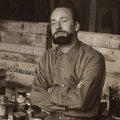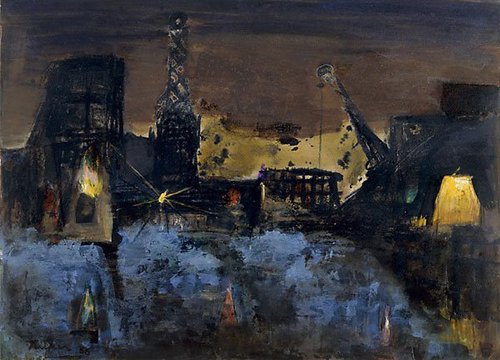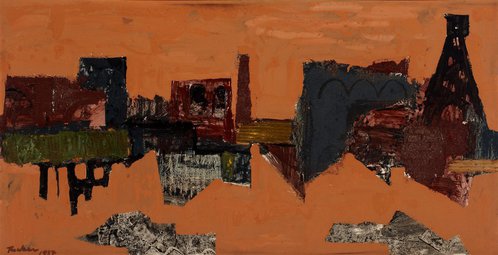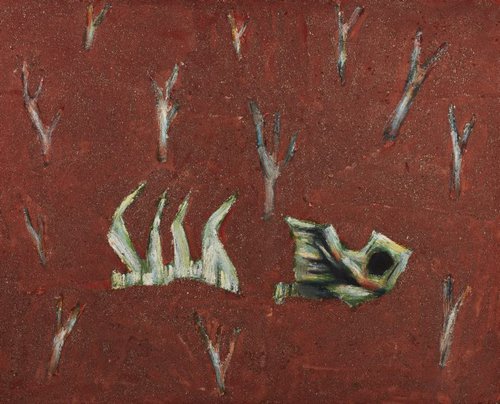-
Details
- Date
- 1964
- Media category
- Painting
- Materials used
- oil and plaster on board
- Dimensions
- 100 x 74 cm sight; 101.3 x 75.8 cm masonite board; 121 x 95.5 x 4 cm frame
- Signature & date
Signed l.l., oil "Tucker". Not dated.
- Credit
- Donated through the Australian Governments Cultural Gifts Program by Barbara Jools in memory of Dr Nic Jools AM 2016
- Location
- Not on display
- Accession number
- 429.2016
- Copyright
- © Albert & Barbara Tucker Foundation. Courtesy of Smith & Singer Fine Art
- Artist information
-
 Albert Tucker
Albert Tucker
Works in the collection
- Share
-
-
About
As an expatriate artist living in Italy in the mid-1950s, Albert Tucker began to explore the ideas and imagery of the Australian landscape and mythology. ‘I was having nostalgic memories of Australia. I was remembering the dryness and gum tree trunks… I had that sense of dried out cratered form which were also volcanic landscapes, and they could also be wounds and gashes.’ 1
This nostalgia for the harsh Australian landscape was explored in works such as 'Antipodean head II' 1959, with its bark-like head. With distance from his home country and the passage of time, Tucker’s work began to move away from the religious imagery which had surrounded him in Europe – ‘the Saint Sebastians, the Christs, the Martyrs and Crosses and Virgins’ to explorers, such as Burke and Wills, masked intruders, fauns and the Ned Kelly myth, which gave his work a new focus. A double-headed axe Tucker had viewed in the Etruscan Museum, combined with the shape of Ned Kelly’s famous armour led to the development of Tucker’s distinctive angular-profile heads, seen in works including 'The intruder', which has a rough, lunar-like surface achieved through using plaster to build up the paint surface in particular areas – Tucker’s method of capturing the uniqueness of the ancient Australian landscape.
The parrot is another reoccurring motif in Tucker’s work, considered by the artist to be a ready-made symbol. Tucker said: ‘The claws that tear and the beak that rips in the middle of the colours of paradise… heaven and hell incorporated in one natural form – beautiful but murderous inside – a conflict between destruction and creation’.2
1 James Mollison and Nicholas Bonham, 'Albert Tucker', 1982, 59
2 ibid 64 -
Exhibition history
Shown in 1 exhibition
20th-Century galleries, ground level (rehang), Art Gallery of New South Wales, Sydney, 20 Aug 2022–2023
-
Bibliography
Referenced in 1 publication
-
Gavin Fry, The Nic Jools collection, Sydney, 2011, 78, 79 (colour illus.).
-




